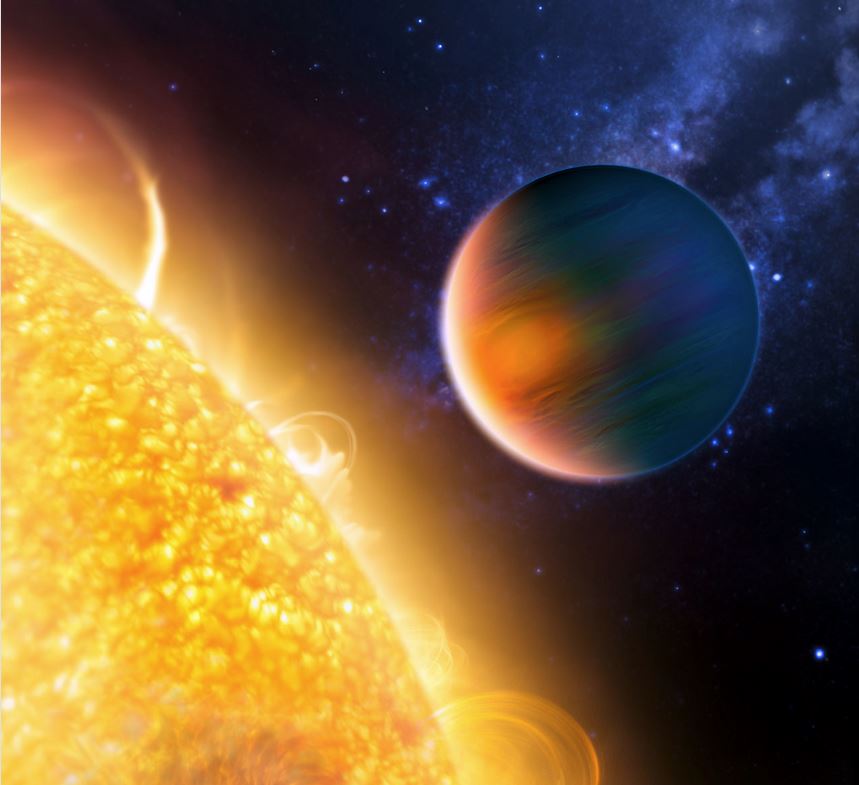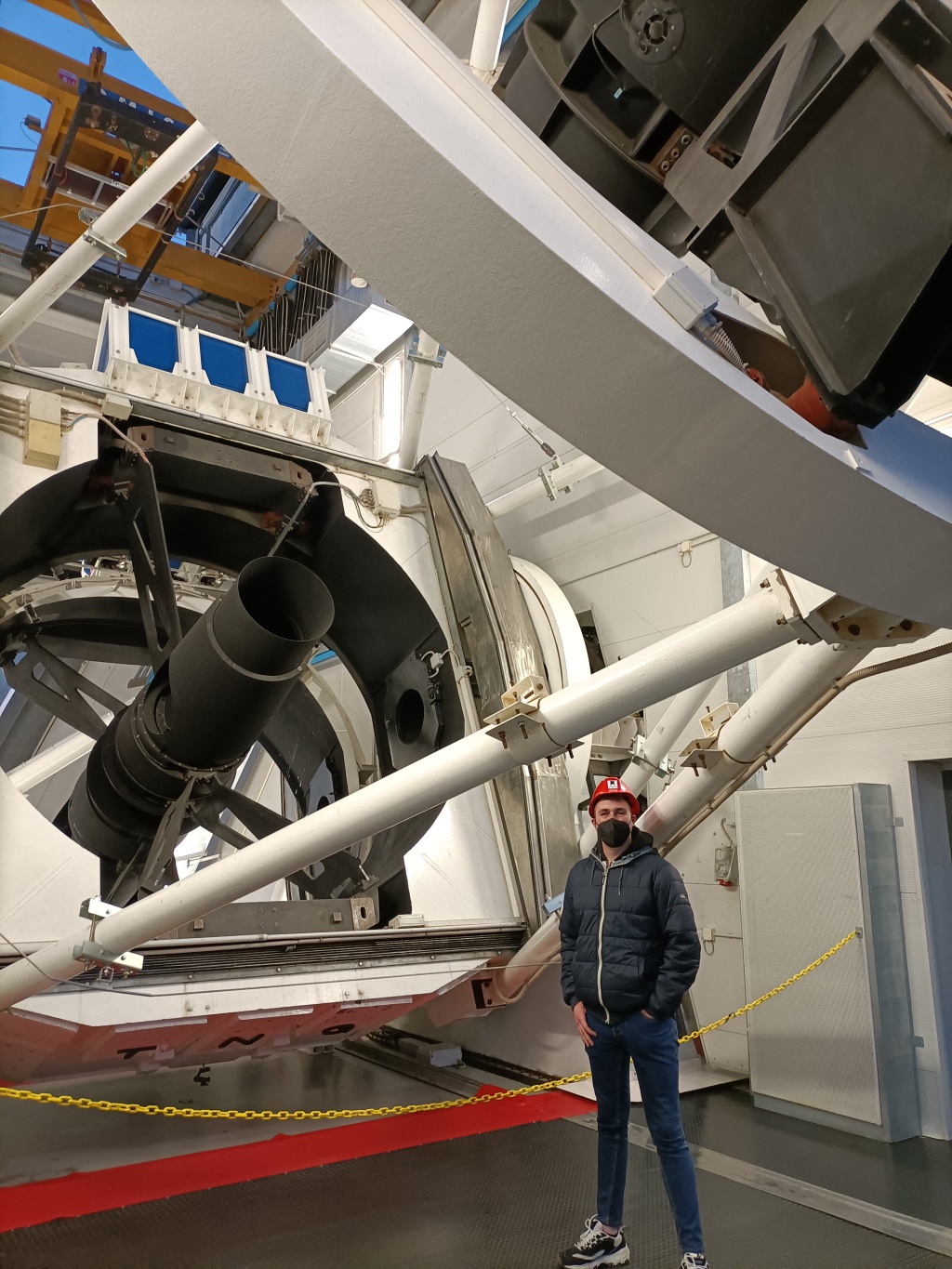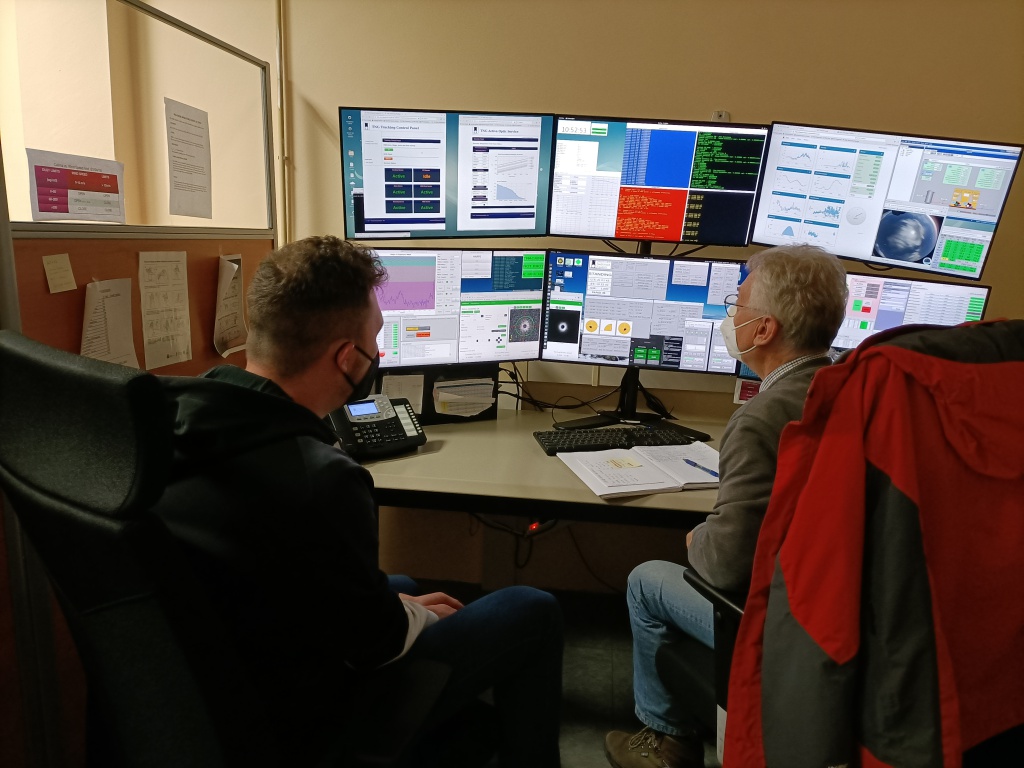Elia, guest astronomer at TNG
Two years after winning the IAU Global Competition NameExoWorlds, with which the International Astronomical Union (IAU) asked to name 110 extrasolar planets and their mother stars - Elia Ceci was finally awarded his prize: a journey to the Canary Islands in order to see and work for two nights at the largest Italian telescope, the Telescopio Nazionale Galileo.
In 2019, IAU, on the occasion of its 100° anniversary, offered the chance to give a name to a planetary system composed by an exoplanet a and its star. About 800.000 people from all over the world took part in the competition, and the winning proposal for the name of the planetary system - HD102195, was made by Elia Ceci, who was at the time a high school student from Cupramontana, near Ancona, in the central region of Marche. Elia's names, Phlegethon and Lethe, refer to underworld rivers mentioned in Dante's Divina Commedia. Phlegethon is the river of fire, since in the popular imagination stars are likened to large balls of fire. Lethe, on the other hand, is the river of oblivion, composed of fog, and reminds the gaseous composition of the planet, which has a mass corresponding to half of Jupiter's own mass. Its orbit lasts less than 4 days, and goes around a star which is slightly smaller than the Sun, at a distance of about 95 light-years from the Earth. Lethe was discovered with the radial velocity method and studied with the data of TNG.
Elia's journey should have taken place in Spring 2020, but Covid19 postponed it to 2022, so that, at the start of May, Elia finally reached the island of La Palma and TNG, whose director Ennio Poretti and the staff welcomed him and offered him the chance to be an astronomer for two nights and observe, with the assistance of Gloria Andreuzzi, Daniele Carosati staff at the telescope and the visiting astronomer Francesco Borsa, dozens of planetary systems far from our own.
Here are a few words by Elia himself: «I had great expectations for this journey to La Palma and all that I saw fulfilled them. When I arrived at the Roque de los Muchachos, I was entrance by the landscaper around me, surrounded by the Atlantic Ocean at 360°, on the crest of a caldera. Reaching the “Telescopio Nazionale Galileo”, I went up to the dome and watched up close both its mirrors and the array of pistons used for active optics.
When it became dark enough, we opened the dome and started observing the first stars if the evening, so as to record their radial speed. We went on for the whole night, pointing one star at a time, while always taking care of the changing weather conditions, as well as of the presence of desert dust (calima) in the atmosphere. By constantly checking the seeing, we could decide whether to give priority to more or less bright stars; that's why you should always be ready to change implementing observational programs. When we approach sunrise and stars get fainter, the night sessions ends, and you go back to the residencia for a rest».
Elia is now an astronomy student at the University of Bologna, and we wish him, as astronomers say, clear nights at the telescope... why not, perhaps at TNG itself.

Artist image representing a hot Jupiter similar to HD 102195b. Credits: Esa, Nasa, G. Tinetti and M. Kornmesser.

E. Ceci in front of the main mirror of the Telescopio Nazionale Galileo.

E. Ceci and D. Carosati in the control room of the Telescopio Nazionale Galileo.
Useful links:

